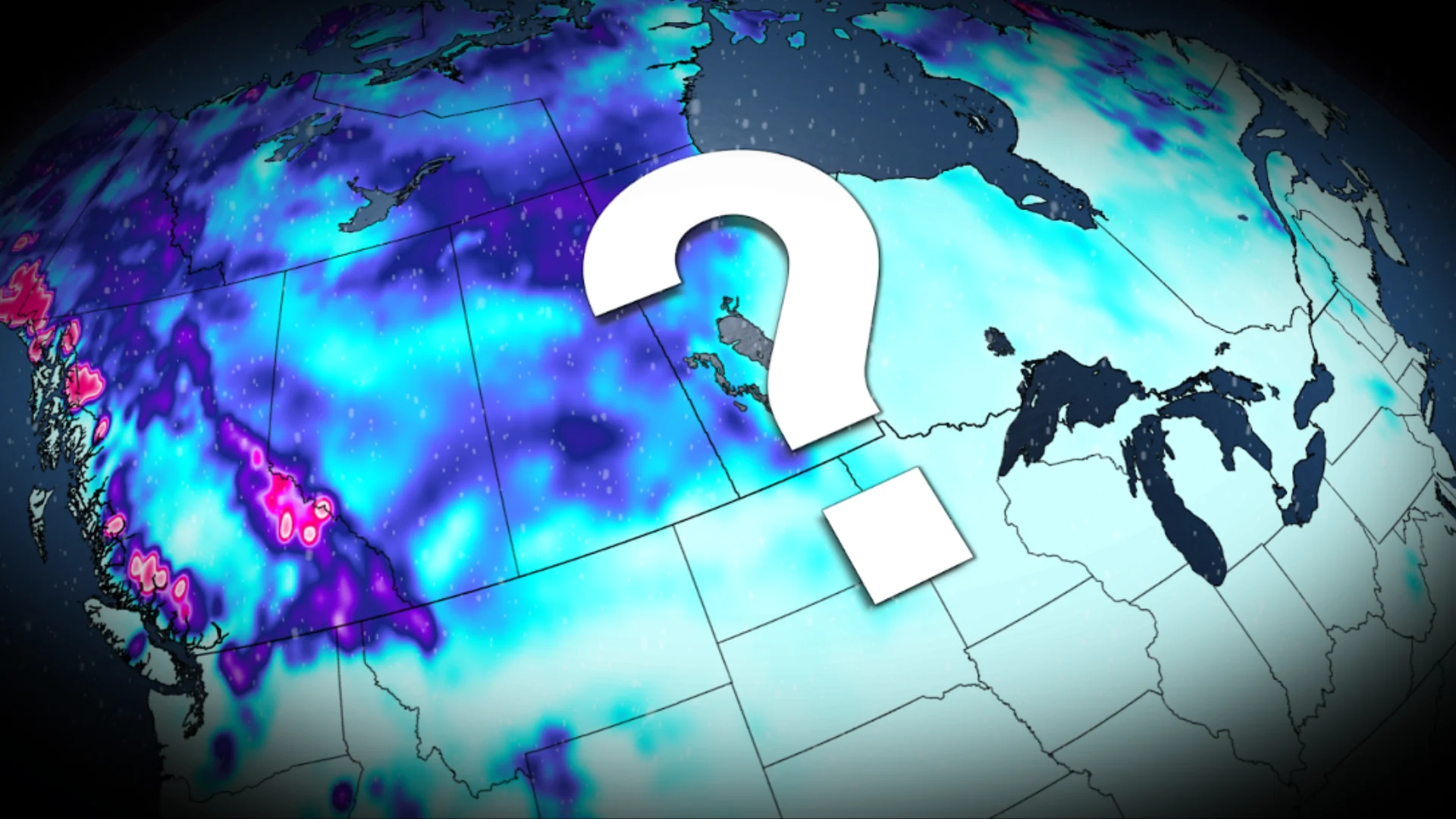
The deadliest risk Canadians take each winter
During adverse weather, the risk of an accident increases exponentially. Here's what you need to know.
Many Canadians underestimate the risks of driving. As part of our daily routines, commuting in a vehicle has become second nature, masking the inherent dangers it carries.
From your very first car ride as a newborn to your daily commutes, every Canadian faces approximately a 1 per cent lifetime risk of dying in a car crash. In the U.S., the National Safety Council reports similar odds, with 1 in 93 people dying in motor vehicle collisions. Despite these risks, society has normalized them in exchange for the convenience and mobility that cars provide.
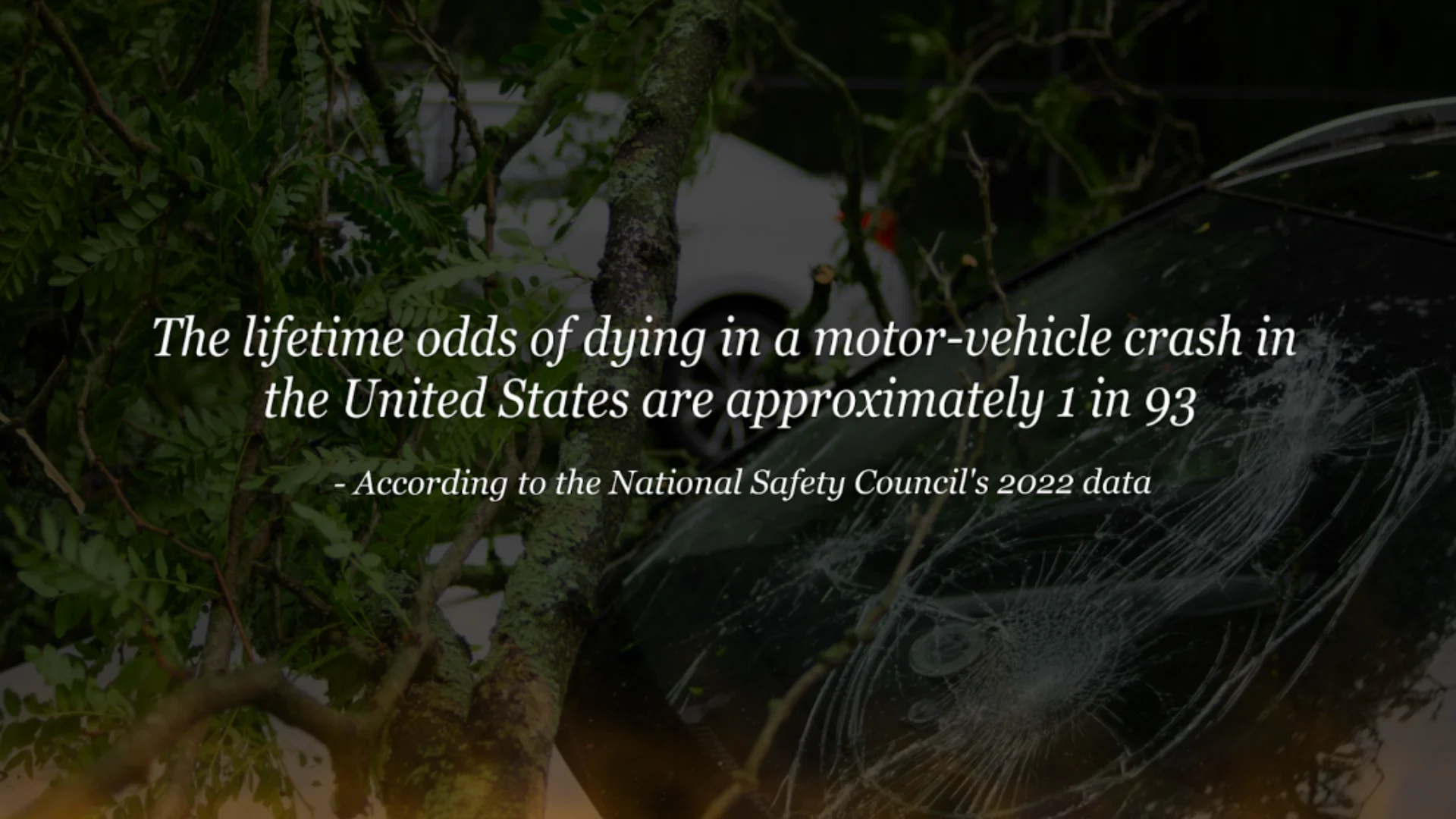
Weather: The silent danger on the roads
During adverse weather, the risk of an accident increases exponentially. Reduced visibility, combined with poor road conditions that compromise traction, can create a deadly combination.
According to Transport Canada, motor vehicle collisions resulted in 1,931 fatalities in 2022. Beyond fatalities, over 100,000 injuries are reported annually. Weather-related factors consistently contribute to over 20 per cent of fatal collisions between 2018 and 2022, making it one of the leading causes of accidents.
The top 3 most dangerous winter driving conditions
Fog
What seems like a harmless phenomenon can turn deadly, especially when paired with cold temperatures. Fog often forms suddenly and locally, catching drivers off guard.
Hidden hazard: Black ice. When temperatures dip towards the freezing mark, the water droplets condense on the roadway, creating an invisible and dangerous surface.
This is where appropriate follow distance comes into play. It turns an annoying tailgater into a serious hazard.
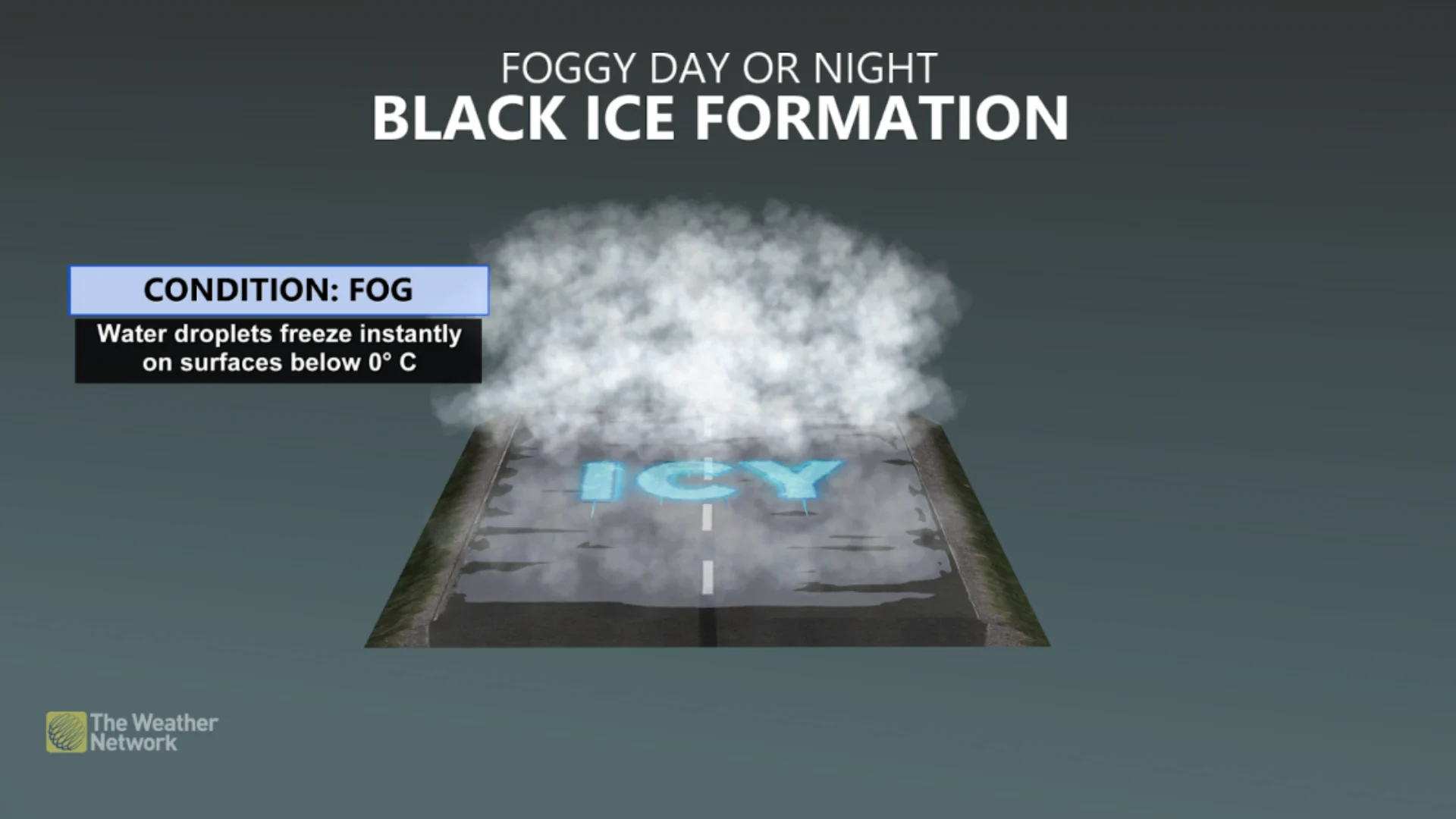
Driving tip: Maintain a 4-second following distance in the poorest conditions, double the usual 2-second rule.
Lake-effect snow
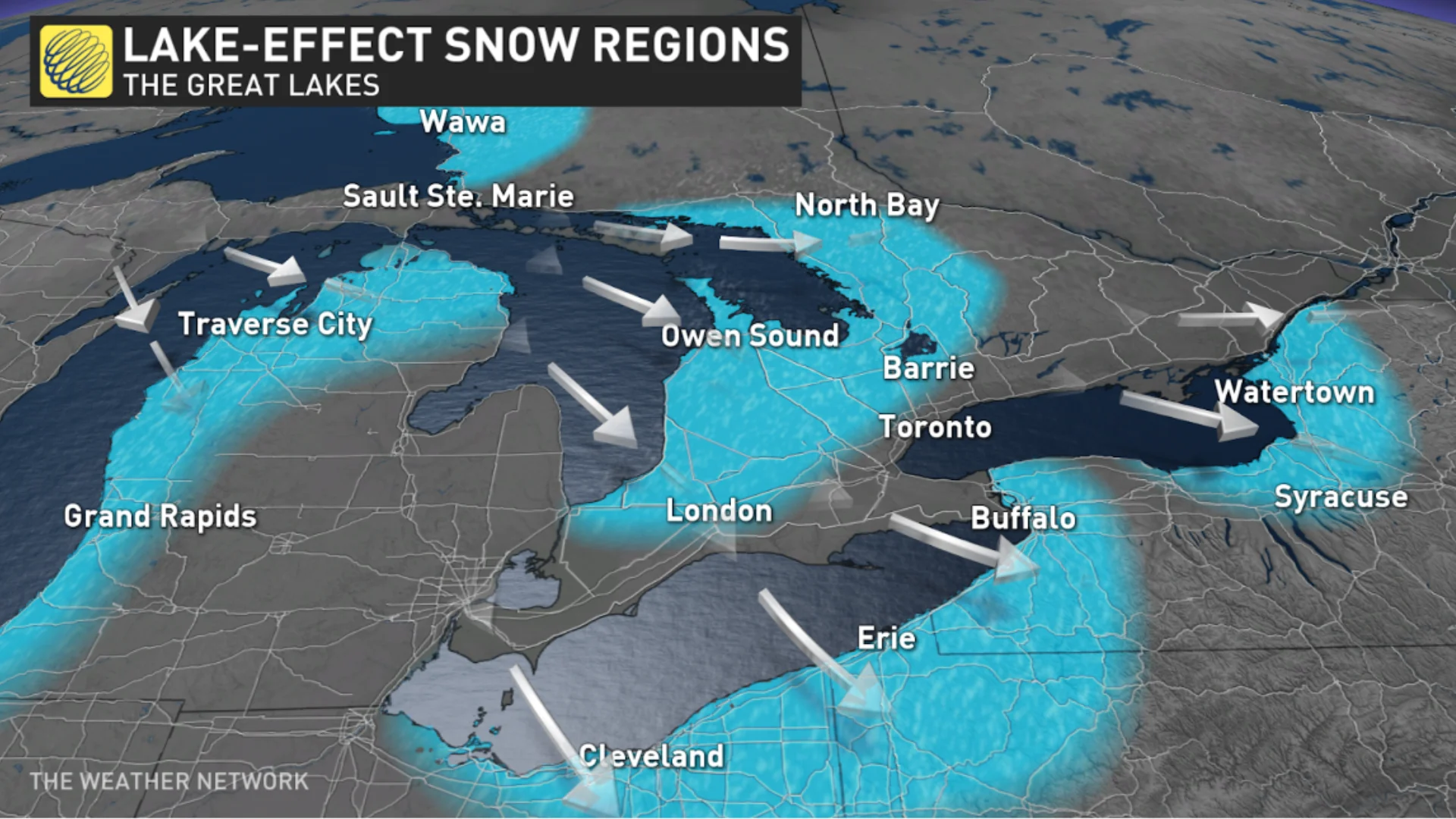
Lake-effect snow shares some attributes with fog, like localization and abrupt change in visibility. These localized white-outs can drop visibility to near zero within seconds.
Beyond the snow belt: Think you’re out of the woods if you’re not in a traditional snow belt? Think again, because frontal squalls can develop with arctic air, even well inland from bodies of water. They can produce similarly dangerous conditions.
Driving tip: Avoid using cruise control during adverse weather, and slow down during periods of reduced visibility.
Freezing rain
This is a serious menace when it comes to winter driving. It’s treacherous because it can turn an untreated roadway into an ice rink, making it the most dangerous for driving.
Pro tip: Postpone travel if significant amounts of freezing rain are in the forecast.
Safety tips for driving in adverse weather
Install winter tires. Winter tires can improve stopping distance by up to 30 per cent in wintry conditions.
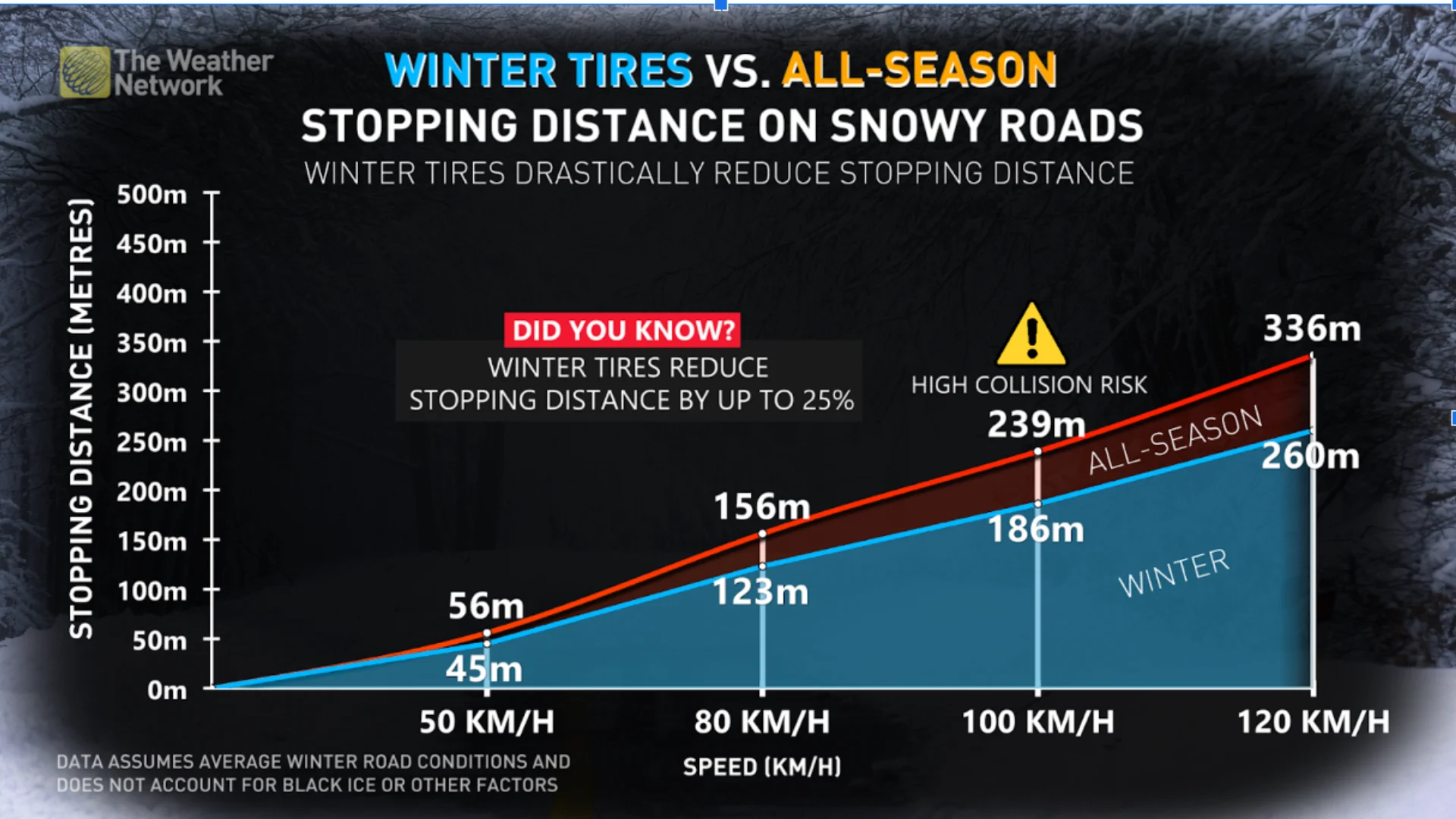
Did you know? The relationship between speed and stopping distance is exponential, meaning high speeds drastically reduce your reaction time, increasing braking distance.
RELATED: When should you switch to winter tires? Provincial breakdown, here
Learn how to navigate skids
Front-wheel skid: Ease off the gas and cautiously steer in the direction you want to go.
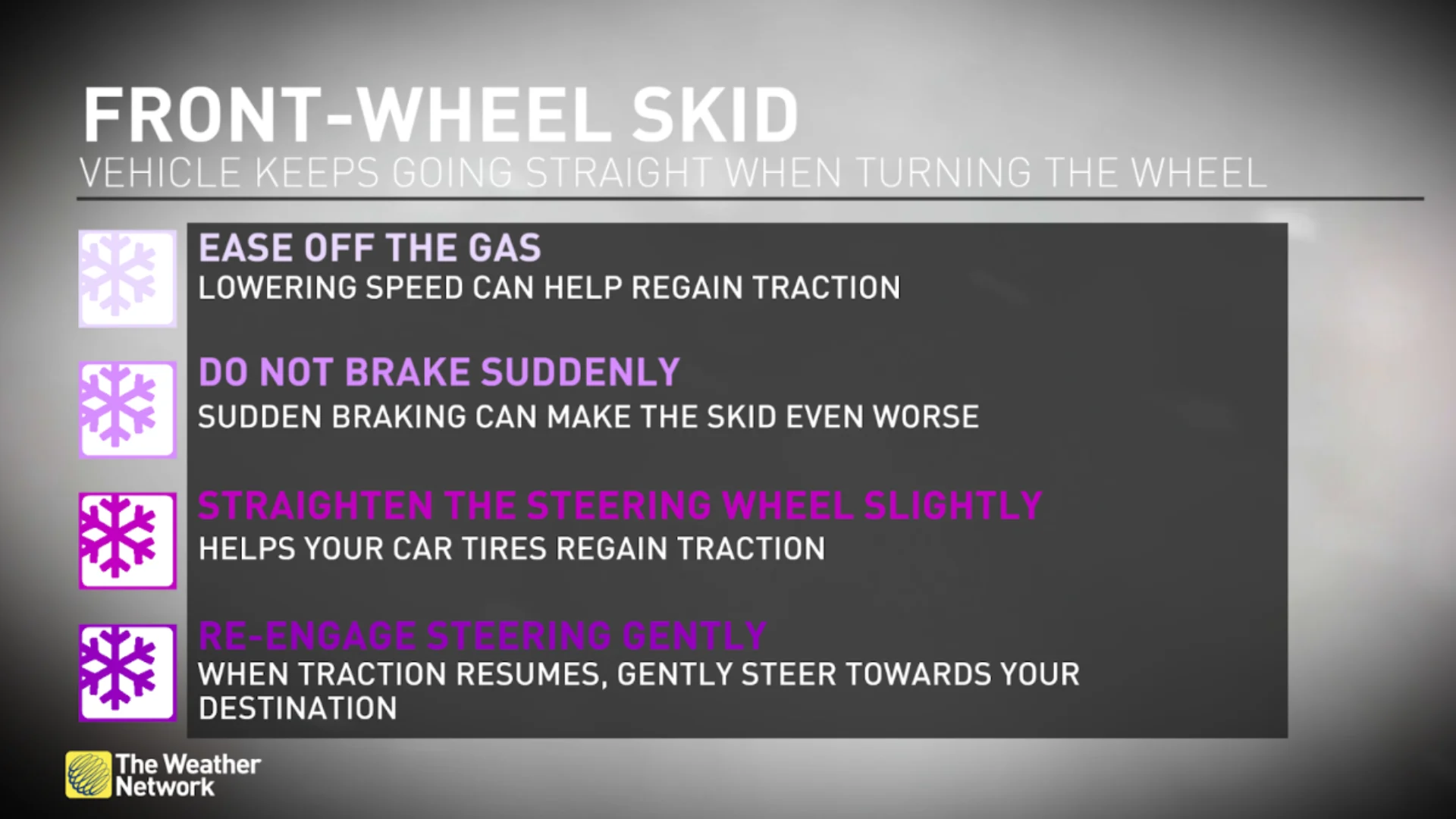
Rear-wheel skid: Turn into the skid to regain control and avoid any sudden braking.
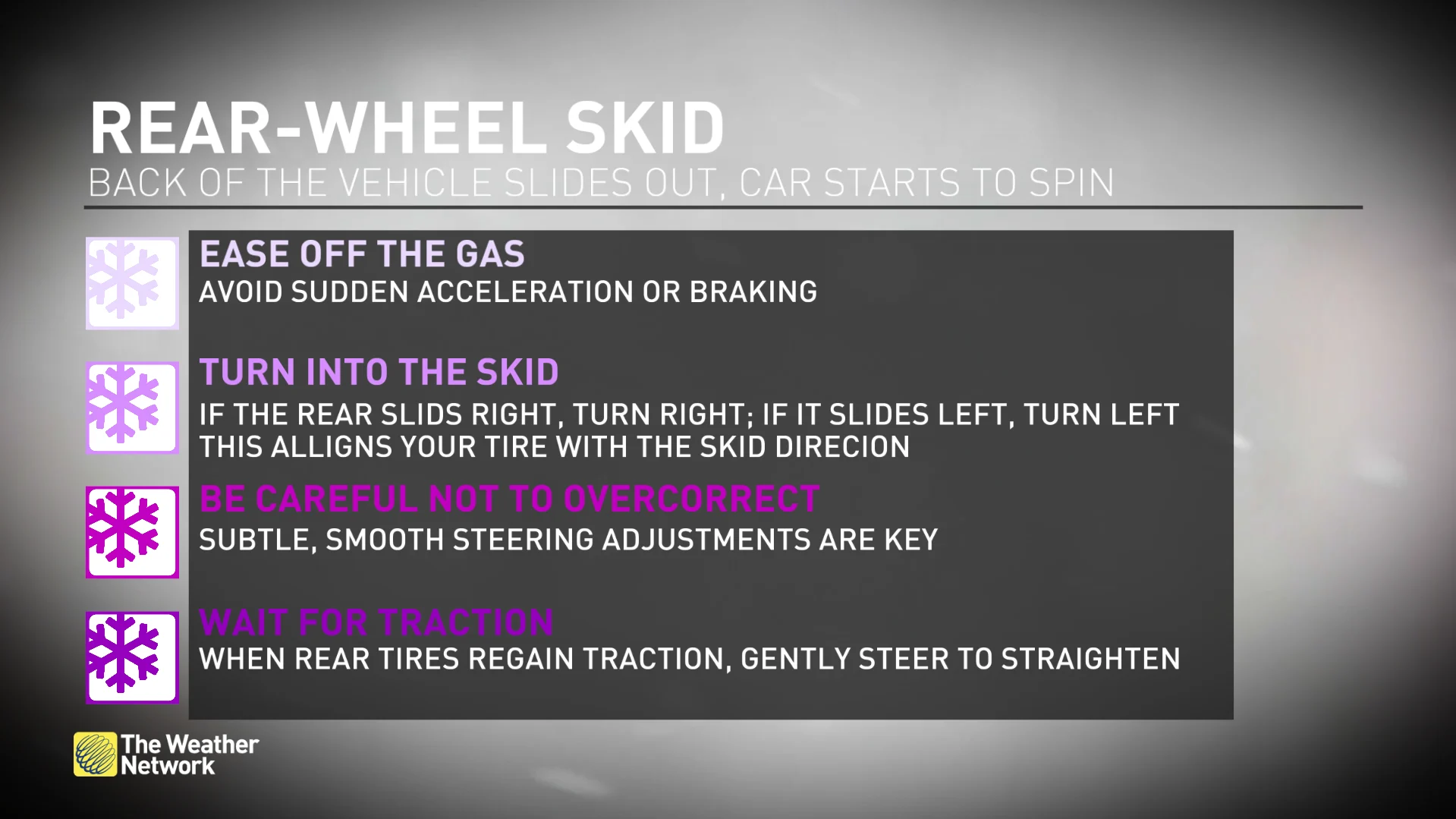
All-wheel skid: Ease off the pedals and focus on gently steering while waiting for traction to return.
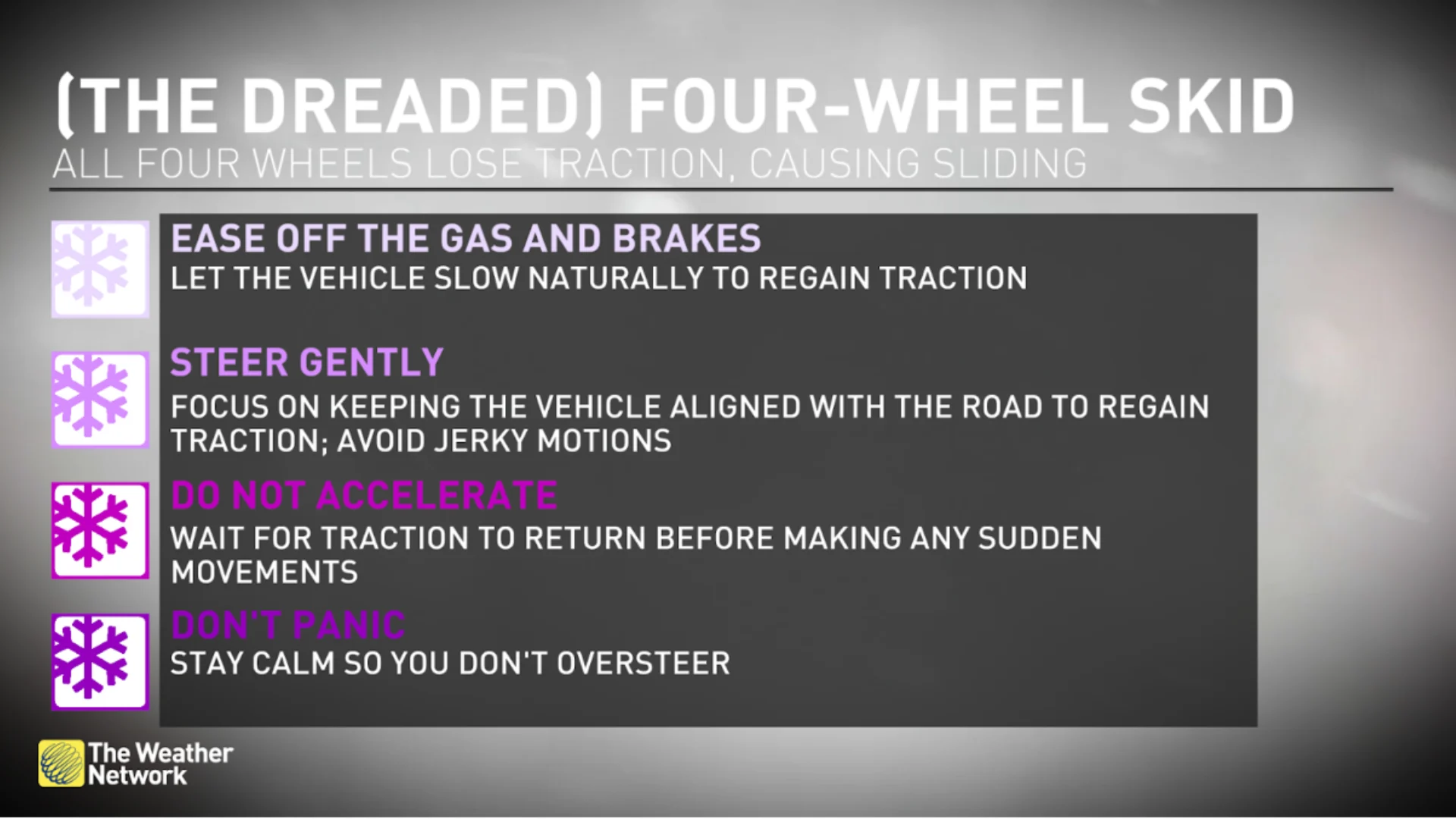
Additional safety tips:
Prepare an emergency kit. Include the basics like snacks, first aid kit, flashlights and blankets.
Plan your travel. If possible, postpone trips during active weather and especially freezing rain. Driving is not worth the risk.
Adjust your speed. A gentle reminder that stopping distance increases exponentially as your speed increases.
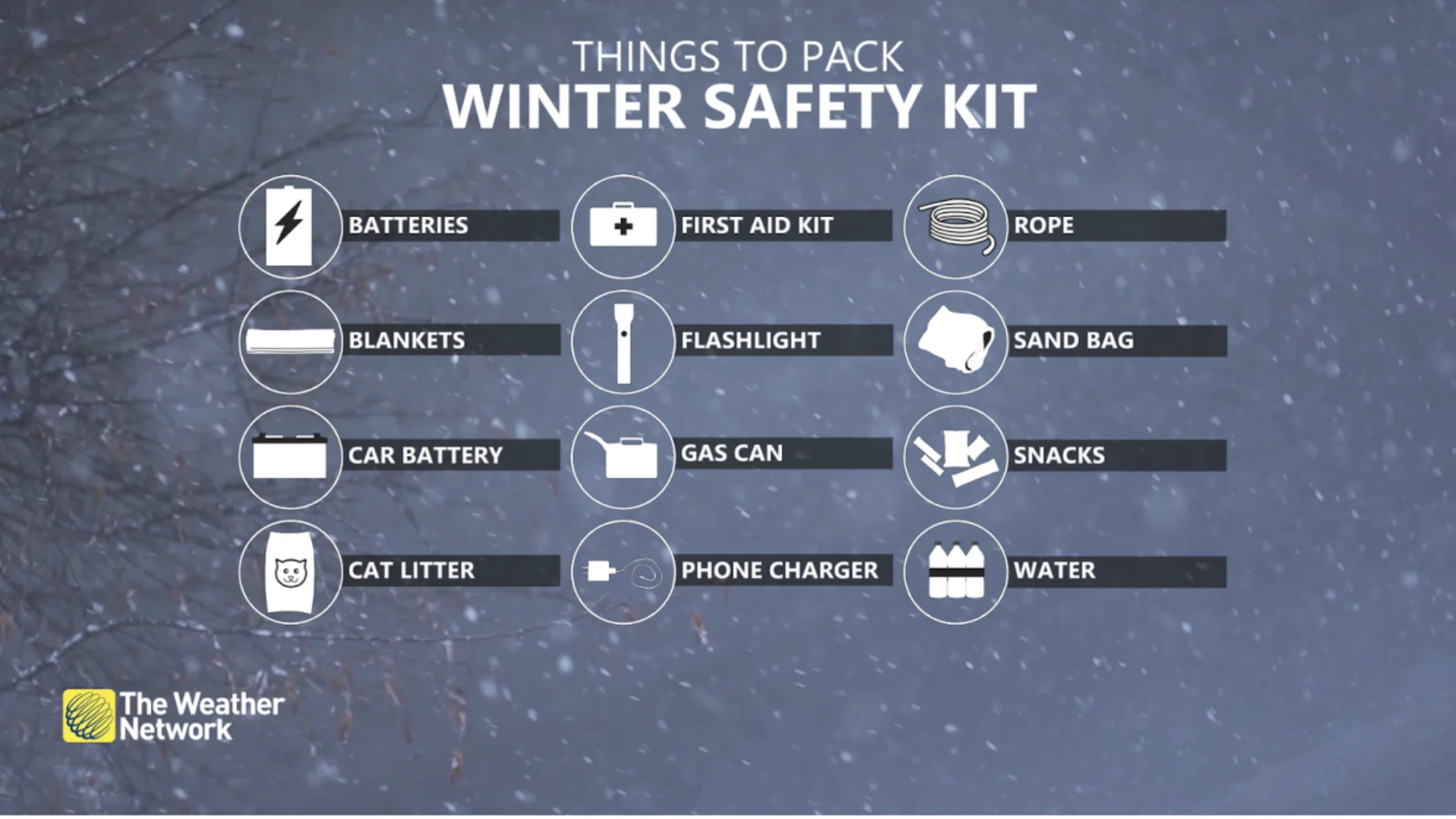
The reality of winter driving in Canada
For many Canadians, driving isn’t optional. Spotty public transit options in remote areas amplify the need for commuting by automobile an everyday occurrence. Many Canadians don’t have the choice to work remotely, or the public transportation system is sparse in rural Canada, so commuting by car is a necessity.
Winter storms may be part of the Canadian lifestyle, but with some preparation and extra caution, we can mitigate risks and ensure we all make it safely to spring.
